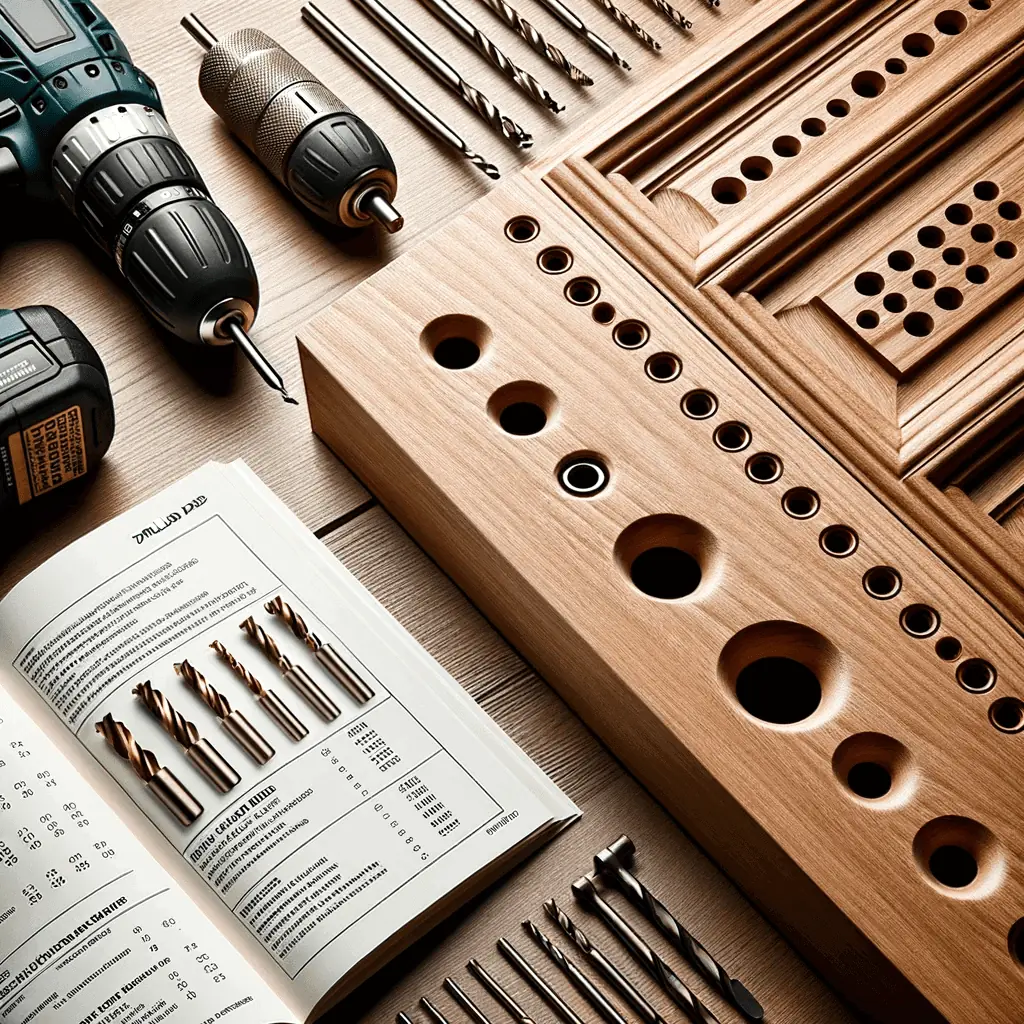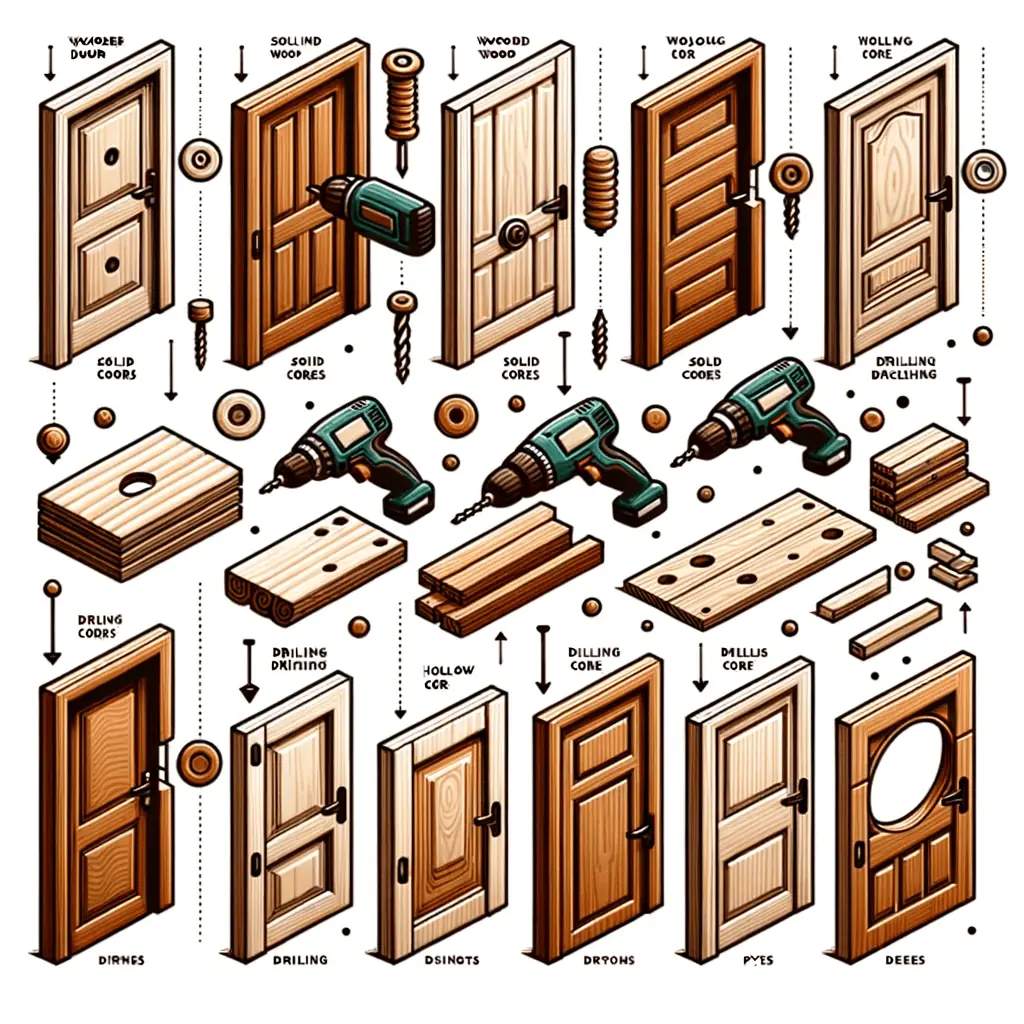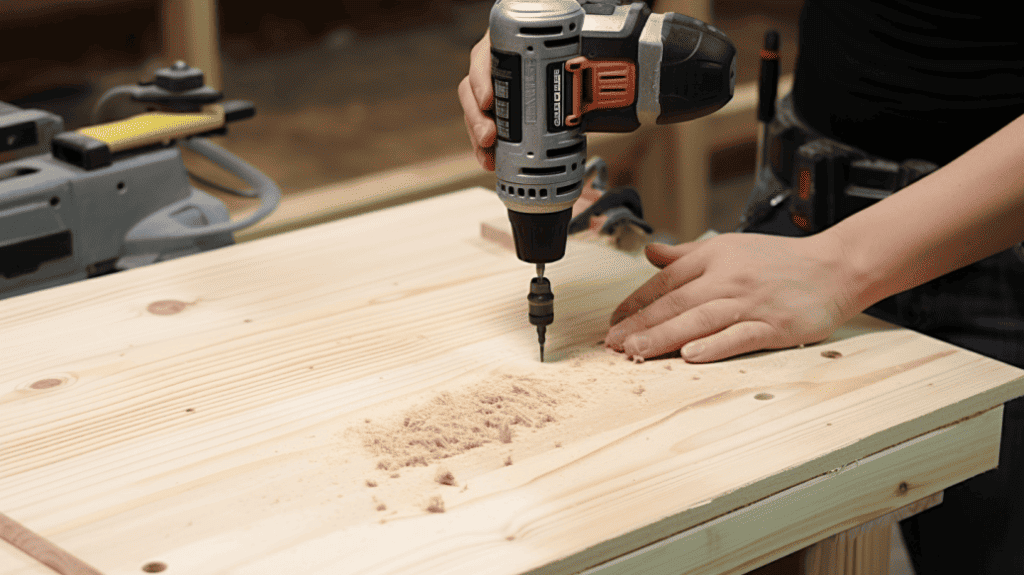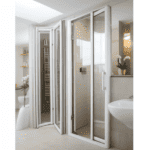
Drilling holes in wooden doors is a common DIY task needed for installing door knobs, locks, handles, hinges and more. But it does require using the proper tools and techniques to avoid splitting the wood or causing other damage.
This comprehensive guide’ll cover everything you need to know about successfully drilling holes in wooden doors.
Why Would You Need to Drill Into a Wooden Door?
There are several reasons you may need to drill into a wooden door:
- To install new door knobs or handles
- To install new locks like deadbolts
- To install door hinges
- To create holes for running wires through
- To install peepholes or viewing holes
- To hang decorations or artwork on the door
What Tools Do You Need to Drill Into Wooden Doors?
Having the right tools for the job will make drilling clean holes into wooden doors much easier. Here are the recommended tools:
- Cordless drill – A cordless drill with an adjustable clutch and variable speeds offers the most control.
- Drill bits for wood – Brad point, auger, spade, and hole saw bits designed for drilling wood.
- Tape measure – To accurately measure and mark hole locations.
- Pencil – To mark the holes.
- Clamps – To secure the door while drilling.
- Scrap wood – Place behind the door when drilling to prevent splintering.
- Safety gear – Protective eyewear, ear protection, gloves.
Selecting the Correct Drill Bit

Choosing the right drill bit for the job is key to achieving clean and accurate holes in wood:
- Brad-point bits – For small pilot holes. The sharp point helps guide the bit and reduce splintering. Sizes generally range from 1/16” to 3/8”.
- Auger bits – For drilling medium to large diameter holes from 3/8” to 1”. The screw tip pulls the bit through the wood smoothly.
- Spade bits – These flat, paddle-shaped bits drill large diameter holes quickly. Available in sizes ranging from 1/4” to 2”.
- Hole saws – For very large diameter holes. The hole saw has a drill bit in the centre and sharp teeth around the perimeter. Sizes range from 1” to 6”.
Always pick a drill bit slightly smaller than the screws or hardware that will be inserted into the hole.
How to Drill a Hole in a Wooden Door
Follow these steps for clean and straight holes when drilling into wooden doors:
- Measure and mark the location – Use a tape measure and pencil to plot the exact position. Check twice for accuracy.
- Clamp the door – Secure it to a stable work surface using clamps to prevent shifting while drilling.
- Drill pilot holes – First, use a Brad point bit to drill small pilot holes before using larger bits. This prevents splintering.
- Drill slowly – Let the bit do the work. Apply even, firm pressure, but don’t force it.
- Use backer board – Place scrap wood behind the hole location to prevent splintering when the bit breaks through.
- Drill from both sides – Flip the door over for a clean exit hole and drill from the opposite side to meet the first hole.
- Clean holes – Use a vacuum and soft brush to remove all wood dust and debris.
Drilling Holes for Specific Applications
The size and location of holes will vary depending on what you are installing into the wooden door:
Door Knobs and Handles
- The most common diameter is 2-1/8”.
- Position 37” to 44” above the floor.
- The exact position will depend on the door handle height.
Deadbolts and Locks
- Deadbolt holes are typically 2-1/8” or 2-3/8”.
- Height is the same as door handles, between 37” to 44” from the floor.
- Mortise locks require larger holes.
Hinges
- It must be precisely aligned to attach the door properly.
- Hole size varies based on hinge size.
- Equal distance from the top and bottom of the door edge.
Wires and Cables
- Use stepped drill bits to increase hole diameter gradually.
- Position holes so wires will be hidden by trim or jamb.
- Caulk around wires to seal the hole.
Peepholes and Viewers
- Requires drilling hole completely through door.
- The diameter must match the peephole housing size.
- Height should align with eye level, around 60” high.
Drilling Techniques to Prevent Splintering

Splintering is common when drilling into wood, but can be prevented:
- Clamp the door to provide backing support.
- Drill pilot holes using brad point bits before widening.
- Place scrap wood behind the hole to stop splintering as the bit exits.
- File rough edges smooth after drilling.
- Use a punch or awl before drilling to indent the starting point.
- Drill slowly with sharp drill bits. Dull bits tear wood rather than cut it.
- Hollow out holes with a Forstner bit for cleaner edges.
- Apply painter’s tape around the hole location to help reduce splintering.
How to Drill Straight Holes
Several methods can be used to ensure holes are drilled straight and true:
- Use a drill press for ultimate control and accuracy.
- Construct a DIY drilling jig as a guide.
- Align the drill bit tip exactly over the pencil mark before starting.
- Take care not to apply too much pressure, forcing the bit off course.
- Clamp a straight-edged board to the door as a guide for the drill.
- Go slowly and let the sharp drill bit do the work.
- For deep holes, frequently lift a bit partway out to clear away debris.
How to Determine Drill Bit Size for a Door
Follow these tips to select the right drill bit size:
- For hinges, measure the hinge and screw diameter.
- Handle holes are typically 1-1/8” to 1-1/4” diameter.
- Most deadbolts require 2-1/8” holes.
- Measure existing door hardware holes if replaced.
- Review door knob/handle installation instructions for hole size.
- Allow 1/16” clearance between the drill bit and hardware diameter.
- Start smaller if unsure. You can always increase the hole size if needed.
Drilling Holes in Hollow Core Doors
Hollow core doors require some extra care when drilling to avoid cracks and splits:
- Use sharp, high-quality drill bits designed for wood.
- Clamp the door securely to a stable work surface.
- Reduce drill speed to prevent overheating bits.
- Drill slowly and let the bit do the work. Avoid forcing it.
- Add extra support, such as a backer board behind hole locations.
- Clean holes thoroughly to remove debris inside the cardboard core.
How to Patch or Repair Drilled Holes in Wooden Doors
If holes turn out misaligned or you need to patch previous holes, here are some options:
- Wood filler – Available in different wood tones. Press into the hole and allow to dry before sanding smooth.
- Wood plugs – Glue plugs into holes, slice flush with door surface, then sand. Match plug species to door wood.
- Dowels – Glue cut dowel segments into holes, sand flush when dry.
- Patch kits – Contains adhesives and veneers to fill and patch small holes.
- Sand and refinish – For slight misalignments, enlarge the hole, then smooth and refinish the door.
Mistakes to Avoid When Drilling Wooden Doors
While drilling holes in wooden doors is straightforward, beginners should avoid these common mistakes:
- Forcing the drill or applying too much pressure – Let the sharp bit do the work.
- Failing to drill pilot holes – Causes splintering around the hole edges.
- Using dull or wrong drill bits – Leads to tear-out and ragged holes.
- Drilling deep holes in one pass – Can overheat and bind the bit.
- Holding the drill at an angle – Causes holes to be drilled crooked.
- Not securing the door – This can shift, causing inaccurate hole placement.
- Pulling the drill bit out too fast – Can splinter the exit side of holes.
- Not cleaning out holes – Leaves wood dust and debris inside.
Drilling Holes in Metal Doors

Drilling holes in metal doors like steel requires specialized drill bits:
- Use cobalt or titanium-coated high-speed steel bits specifically designed for metal.
- Lubricate bits with oil or lubricating wax to keep them cool during drilling.
- Apply firm, even pressure, but don’t force the bit.
- Use a centre punch to indent the hole location first. This prevents the bit from wandering.
- Metal shavings must be cleaned from holes to allow hardware to fit properly.
- For stainless steel doors, use carbide-tipped bits.
Safety Tips for Drilling Holes in Doors
For safe and successful drilling, remember these safety guidelines:
- Wear eye protection – Flying debris can damage eyes.
- Use ear protection – Drilling produces loud noise that can harm hearing.
- Wear gloves – For grip and to prevent splinters.
- Unplug the drill when changing bits.
- Ensure the door is securely clamped or braced.
- Double-check measurements before drilling.
- Make sure drill bits and holes are free of grease.
- Maintain proper drill bit sharpening. Dull bits can bind and break.
- Use drill bit sizes matched for the door material.
- Ensure the drill bit is inserted fully into the chuck before starting.
- Follow all manufacturer safety instructions for tools.
FAQ – Frequently Asked Questions About Drilling Wooden Doors
What size hole do I drill for a door knob?
Most standard door knobs require a 1-1/8” or 1-1/4″ diameter hole. Always check door knob installation instructions for the required hole size.
Where should I locate holes for door handles and knobs?
The standard height to drill holes for latches, locks, and knobs is between 36” and 42” above the floor. Again, verify with the hardware specs.
What is the standard height for peepholes?
Peepholes are best positioned at around 60” height from the floor to align with the average adult’s eye level.
What drill bit types work best for wood doors?
Brad-point, auger, spade, and hole saw drill bits designed for wood provide clean drilling with minimal splintering.
Can I drill through both sides of a hollow core door?
Yes, but use caution and slower speeds to avoid cracking the door. Support the exit side with scrap wood when the bit penetrates through.
How do I enlarge a door lock hole that is too small?
Use a series of stepped drill bits in gradually larger sizes to enlarge the hole. Finish by filling the edges smoothly.
What is the standard spacing between hinge holes on doors?
For three hinges, position 4” to 6” from the top and bottom edges and the third hinge midway between them.
What causes drill bits to burn doors when drilling?
Dull bits and/or drilling at too high a speed can generate excessive heat and friction, causing burn marks around holes.
Can I Use the Same Techniques to Drill into a Wooden Door as I Would on a Door Jamb?
When drilling into a wooden door, it’s essential to consider the wood door jamb thickness guide. The techniques for drilling into a wooden door and a door jamb may differ due to variations in the thickness of the wood. It’s important to use the appropriate techniques for each to avoid damaging the door.
Straight Holes In Wooden Doors
Drilling clean, straight holes in wooden doors is easy with the proper drill bits and techniques. Always use sharp bits designed specifically for drilling wood. Clamp doors securely, go slow and let the drill do the work. Position holes accurately based on your hardware requirements. Take precautions to prevent splintering. With practice, you’ll drill perfect holes in your wooden doors for any hardware installation.

Hi, I’m George Anderson, an expert installer with an extensive door installation and maintenance background. I’m passionate about sharing my knowledge on door equipment and accessories through my writing, helping homeowners make informed decisions. My specialty lies in custom door installations, with a commitment to enhancing the aesthetics of every home. Please feel free to reach out anytime for help with door-related questions or needs.







